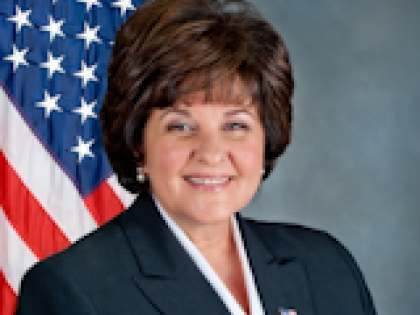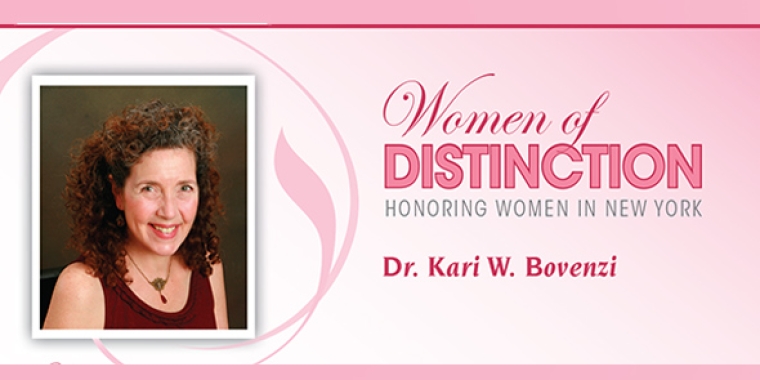
Senator Kathy Marchione's letter and public comment to State Education Department and Board of Regents supporting a teacher evaluation process that was fair, functional and free of politics
Senator Kathy Marchione
October 13, 2015
-
ISSUE:
- Education

June 9, 2015
Dr. Merryl Tisch
Chancellor, New York State Board of Regents
New York State Education Department
89 Washington Avenue
Board of Regents, Room 110 EB
Albany, New York 12234
Dear Chancellor Tisch:
I submit the following letter as my official public comments regarding teacher evaluation standards. I appreciate you, your fellow Board of Regents members, and all of the education professionals at the New York State Education Department, giving my comments your close, careful attention as you work toward shaping teacher evaluation standards that are fair, functional and free of politics.
New York State is home to some of the best schools, and the most dedicated, hard working and professional teachers in our nation. Our education system is powered by terrific teachers who have made considerable personal and financial sacrifices to enter, and remain in, the education profession. Our teachers have forgone pay raises. They have paid out-of-pocket for classroom supplies. They routinely arrive early, stay late, and put their heart and soul into helping their students. They are active and involved, regularly volunteering in their communities and supporting countless local charitable efforts. This is what teachers do, and this is why they make such a positive difference. Our teachers do much more than teach; they inspire, open opportunities and change lives.
Writing as a state lawmaker who has two nieces that are special education teachers and whose daughter-in-law teaches 4th grade, I know for a fact that our teachers are well-trained, highly-skilled professionals. I believe it is vital that the Board of Regents and the State Education Department take the time and effort to get the teacher evaluation process right. This effort should not be rushed nor subject to political considerations.
The vast majority of our schools in New York State are making the grade. This did not happen by accident. Instead, it is the result of years of hard work by our teachers, honest dialog, cooperation and state policymakers listening, responding and working to meet the needs of students, schools, districts, parents and teachers. Another reason why New York State has so many successful schools is because we recognize and respect the critical importance of local control and stakeholder input in establishing education policy.
The new teacher evaluation standards, the Annual Professional Performance Review (APPR) set forth in the 2015-16 State Budget, has engendered a great deal of controversy and, in my view, has taken an unnecessarily confrontational approach toward teachers who feel they are not being treated as the highly skilled, well-trained, dedicated professionals they are. This combative approach has made teachers feel unappreciated, marginalized and under siege.
Unfortunately, much of this was driven by a deliberate process employed by the Governor during the recent budget cycle that directly tied funding for schools to the enactment of his education agenda. In doing so, the Governor essentially tied the hands of all 213 state legislators and limited our ability to make necessary changes as it would have jeopardized there being any education budget this year.
Clearly, making school funding available contingent upon the adoption of public policies in the context of the State Budget cannot be allowed to continue by any Executive, regardless of their political party. The State Budget provides the legal authorization for the state to spend money. It was never intended, nor should it become, a laboratory for public policy experimentation. Legislators need the opportunity to openly debate, honestly discuss, and carefully analyze policies in a deliberate, thoughtful manner that ensures crucial education funding is not held hostage to a particular political agenda.
Since enactment of the 2015-16 State Budget, I have heard from countless frustrated teachers and worried parents who have expressed their near universal disappointment with, and opposition to, the newly proposed teacher evaluation process being directly linked to standardized tests or, in popular parlance, “high-stakes testing.” In particular, the single largest point of contention with the new policy is its overreliance on high stakes testing, an incomplete model of analysis whose effectiveness has been questioned by leading, independent, non-partisan educational organizations[1]. A 2011 report from the American Education Research Association and the National Academy of Education stated the following with respect to the limitations of evaluations performed through standardized testing (specifically, when done through a “Value-Added Model,” or VAM) in accurately assessing a teacher’s ability:
“When applied to individual teacher evaluation, the use of VAM assumes that measured student achievement gain, linked to a specific teacher, reflect that teacher’s ‘effectiveness.’ Drawing this conclusion, however, assumes that student learning is measured well by a given test, is influenced by the teacher alone, and is independent from the growth of classmates and other aspects of the classroom context. However, research reveals that a student’s achievement and measured gains are influenced by much more than any individual teacher. Other factors include:
• School factors such as class sizes, curriculum materials, instructional time, availability of specialists and tutors, and resources for learning (books, computers, science labs, and more)
• Home and community supports or challenges
• Individual student needs and abilities, health, and attendance
• Peer culture and achievement
• Prior teachers and schooling, as well as other current teachers
• Differential summer learning loss, which especially affects low-income children
• The specific tests used, which emphasize some kinds of learning and not others, and which rarely measure achievement that is well above or below grade level.
Most of these factors are not actually measured in value-added models, and the teacher’s effort and skill, while important, constitute a relatively small part of this complex equation. As a consequence, researchers have documented a number of problems with VAM as accurate measures of teachers’ effectiveness.”
In addition to the aforementioned report, other independent reviews have affirmed the limitations of standardized testing in assessing teacher performance[2].
Indeed, in its 2011 report, the National Council of Teachers of Mathematics likewise cautioned against a “narrow use” of testing in measuring teacher performance:
“A narrow use of student test scores to evaluate teachers’ effectiveness ignores the fact that teaching is a complex endeavor. Teaching consists of multiple domains of professional practice, and student learning is a product not only of what happens within the classroom, but also of what happens outside the classroom. Additionally, teachers do not all teach under the same working conditions but deal with differing assignments, student characteristics, and resources. Although evidence of student learning can and should be considered in the evaluation of teachers, it should be only one factor among many and should not be used for high-stakes decisions about individual teachers or schools (McCaffrey et al., 2005).”
Continuing this theme of the constraints posed by the VAM model in determining teacher effectiveness, in 2014 the American Statistical Association included the following as part of
their official statement on the matter:
“VAMs should be viewed within the context of quality improvement, which distinguishes aspects of quality that can be attributed to the system from those that can be attributed to individual teachers, teacher preparation programs, or schools. Most VAM studies find that teachers account for about 1% to 14% of the variability in test scores, and that the majority of opportunities for quality improvement are found in the system-level conditions. Ranking teachers by their VAM scores can have unintended consequences that reduce quality.”
These reports and statements represent a mere snapshot of extensive, clear and compelling evidence as to many substantive concerns of standardized testing accurately reflecting a teacher’s true performance. Given these findings, it would be fallacious for our state’s new teacher evaluation process to place undue weight on such standardized tests. There are many other consequential factors – including class size as well as home/community support, to name just two – that must be weighed in measuring an accurate outcome of teacher performance. Also, careful consideration must be given for determining a standardized evaluation method that fairly scores special education teachers.
Accordingly, standardized testing can be a metric, but it cannot be the sole metric or given undue weight. Testing must be considered among many other salient factors in determining teacher evaluation standards.
The teachers and parents I represent, and serve, believe that the proposed teacher evaluation process is flawed, impractical, unwieldy and unfair. I share these concerns. We can do better, we must do better, and we will do better for our students, schools, teachers and parents. We must get the teacher evaluation process right.
The following are my specific policy suggestions – with specific time frames – to fix the many deficiencies in the current teacher evaluation process as established by the 2015-16 Education Budget. Inclusion of my proposals would ensure teacher evaluation standards that are fair, functional and free of politics.
- Lengthen and strengthen the public comment period to ensure that all New Yorkers have their voices heard and can offer specific input to shape the teacher evaluation process by expanding the official public comment period until December 31, 2015;
- Conduct 13 public forums, one in each Regents District, as part of the formal public comment period;
- Require SED to report public comments by March 31, 2016;
- Adopt regulations and guidelines by new State Education Commissioner Elia by December 31, 2016; and
- Implementation of the approved APPR by schools by January 1, 2019, since that is when common core test scores will be used in assessing the students.
Thank you for your careful attention to my public comments and for including them as part of the official record on this important issue. Please feel free to call me at (518) 455-2381, or e-mail me at marchione@nysenate.gov with any questions.
Sincerely,
Kathleen A. Marchione
State Senator, 43rd District
CC: New York State Board of Regents
New York State Education Commissioner MaryEllen Elia
NYSUT President Karen Magee
UFT President Michael Mulgrew
[1] See American Education Research Association and National Academy of Education (2011). Getting Teacher Evaluation Right: A Brief for Policymakers, for a more detailed explanation as to the limitations of a Value-Added Model (VAM) in terms of its efficacy for teacher evaluations.
[2] See also National Council of Teachers of Mathematics (2011). Teacher Evaluation, A Position of the National Council of Teachers of Mathematics; and American Statistical Association (2014). American Statistical Association Statement on Using Value-Added Models for Educational Assessment.
